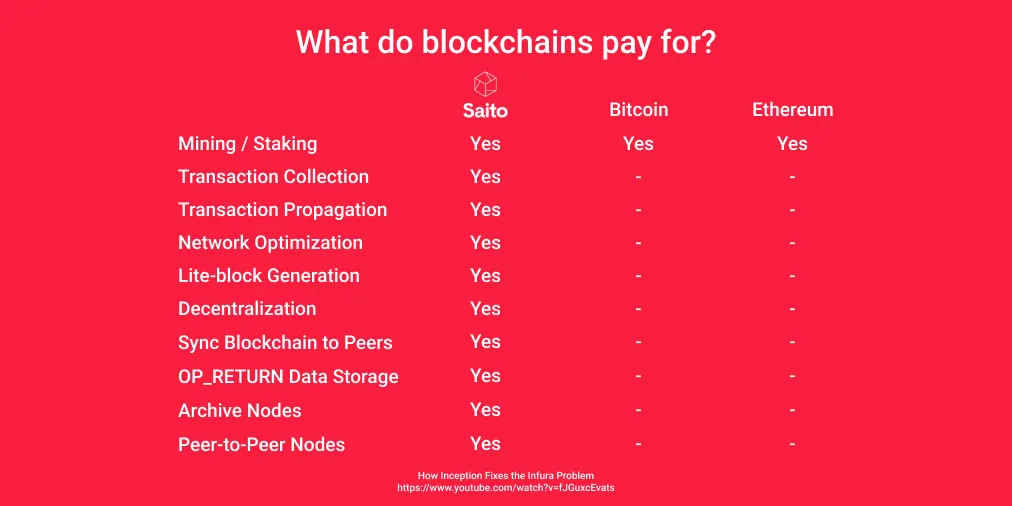
The Future of Open Source Software
In 2009 I stumbled on an amazing open-source project, Redis. It was one of the coolest things I’d seen in a while, so I sent a small $50 donation to the owner with a message
Antirez, you’ve done a great job with Redis so far. This isn’t much, but hopefully it’s enough to let you know there is interest in Redis. Keep up the great work. -Brad
Antirez graciously listed me as a sponsor for my tiny donation and still does 13 years later.
Since then, Redis has grown into the most popular key-value database ever.
It’s the heart of many modern applications.
I’ve received tens of thousands of dollars of value from Redis, and only contributed $50 back. Which was enough to earn me a unique spot— one of only three people ever to donate to the project. For one of the most popular open-source projects of all time.
See the problem?
Broken-Source
Building open-source software is not economically sustainable. It’s often funded by passion on nights and weekends.
When companies create open-source projects, they have to close-source something. Their open-source project is often a defensive moat for their paid products.
You can’t sustainably give something away for free.
This is a well know problem, and open-source developers aren’t nearly the first to discover it.
The irony is so much of the modern digital economy is built on open-source software — billions of dollars flow through projects that can’t afford development.
Imagine if these developers captured even a tiny percentage of the value they created? They’d be able to indefinitely sustain development — accelerating open infrastructure for everyone — giving humanity an incredible gift.
To accomplish this though, you’d need a breakthrough in collective action research that dates back a few decades.
As it turns out, in 2009, another open-source project launched that did exactly that.
Breaking Bitcoin
What does Bitcoin have to do with solving the incentive problems with open-source software? Everything.
Satoshi Nakamoto did something remarkable — he solved a collective action problem, the same kind open-source suffers from.
Most Bitcoin experts argue Satoshi solved The Byzantine Generals problem, but that’s not quite right. Leslie Lamport solved The Byzantine Generals problem in 1982. Satoshi Nakamoto created a new solution that removed the need for a leader.
Leslie Lamport solved a computer science problem.
Satoshi Nakamoto solved a social science problem.
If you’ve never heard this before, I’m not surprised — nobody talks about it.
Nobody, except David Lancashire and Richard Parris, co-founders of Saito, the spiritual successor to Bitcoin, who’ve been screaming it to anybody that will listen for years. 😜
The thing David and Richard understood about Bitcoin, that almost nobody else understood, was the genius was in the self-sustaining network — without it, everything falls apart.
Which is why they were able to realize the importance of what Satoshi did, but also where he fell short — that he solved one collective action problem but left others.
By leaving collective action problems, Bitcoin’s stakeholders are not incentivized to cooperate, and the chain is ripping itself apart — it keeps forking, can’t scale, and loses decentralization as it gets bigger.
Every “solution” to this problem that doesn’t align incentives will not work. Bitcoin is not a technical innovation, it’s an incentive innovation — incentive problems can’t be fixed with technology.
It takes understanding What Bitcoin Actually Did, to understand how to fix it.
By standing on the shoulders of giants, the Saito team solved the problems with Bitcoin, by solving the incentive problems, by solving the remaining collective action problems with public blockchains.
What’s incredible, is by Saito solving these problems for themselves, they’ve also solved them for you and me.
Saving Bitcoin
The major innovation of Bitcoin is the self-sustaining network.
Saito correctly identified that mining and staking do not pay for everything required in a self-sustaining network. So what’s happening? Public blockchains are being privatized by companies; they’re being destroyed.

The solution is to pay for everything required to sustain the network. In Saito’s case, it means not only paying for security through mining and staking, but also fee collection.
What does paying for fee collection mean? It means if you bring valuable transactions to the network, you get paid.
This turns Saito into the most secure blockchain because an attacker isn’t just competing with miners and stakers—but the entire economic value of the network.
This change has profound implications for Saito, but that’s for another post.
What this means for open-source developers is equally big.
For the first time ever, part of the economic value passing through open-source projects is captured by the developers, with no additional cost to users or businesses.
Everybody is better off. Win-win-win. Incentives aligned.
Boom.
Saving Open-Source Software
Saito works by paying nodes on the network that route transactions. The earlier a node sees a transaction, the more they make.
This means software that runs on the Saito network receive the largest payment of any routing node, incentivizing user applications, business applications, API’s and more — all can be open-source and economically sustainable (even lucrative!).
Users don’t pay anything additional. In fact, the fees on Saito are already significantly lower than most other blockchains, so the cost to users is far below what they’re already paying today.
Open-source projects can do *extremely* well financially, while still giving away their software 100% for free—enabling sustainable development and open infrastructure for everyone.
This has never been possible before, and I predict open-source developers will flock to Saito to build the next open-source Internet while becoming fabulously wealthy. 🤑
Some open-source developers may argue if users are paying, even small transaction fees, it’s not really free. Or by making money it may destroy the love of the project. That’s fair. FOSS still exists, and this may not qualify.
But it’s never been possible to give away open-source software and make a percentage of the economic activity that flows through it. That’s really big. HUUUGE.
This alone has the power to revolutionize open-source software. But there’s One More Thing.
One More Thing
Saito incentivizes transaction-facing software. That’s huge.
But some software isn’t transaction-facing—like libraries.
Incentivizing good libraries would be insanely great.
Well, just like users can pay developers with no additional cost to themselves on Saito, developers can pay developers with no additional cost to themselves.
The Saito network wants you to optimize the routing path to get your transactions into blocks as quickly as possible.
But, it seems you could set up a tiny economic routing path, that actually routed transactions through the nodes of useful software you use — paying them, with no additional cost to yourself.
You’d have to be careful not to make the chain too long, which you could do by round-robining the dependencies. Developers would have to run routing nodes, which they’d be paid to do. If a routing path failed, a developer wouldn’t get paid (incentive to keep their node healthy). There are some other tricks you could use to ensure the weighting was fair, open, and leaderless (sound familiar?).
Somebody could create a license and toolchain, that when their software is used on the Saito network, some percentage of the transactions have to be routed through them. It would cost nothing and provide huge benefits to that developer.
Imagine if it even covered forks? Getting routed transactions from not only the people using your software, but the people who have forked away to compete with you—now that’s something.
This would enable every kind of software on the Saito network to receive the benefits of capturing a percentage of the value they create, with no additional cost to users, developers, or businesses — all while giving their software away 100% for free.
By solving their collective action problems, Saito has also solved them for everybody else on their network — enabling public goods like open-source software to receive new superpowers that align the incentives of everybody involved — something never before possible.
A first for blockchains, a first for open-source software, a first for public goods, and a first for free markets.
For the first time ever, open-source development is economically sustainable.
How the Web Was Won
Today almost everybody recognizes the transformative power of software—it’s become the driver of our modern economy.
Open-source software is a completely different animal—it’s free like speech and free like beer. It’s political, it can be copied, modified, forked, and widely run—most importantly it evolves in the free market. It’s much more powerful.
The irony of open-source development not being economically viable despite generating billions in value gets solved with a twist: the call is coming from inside the house.
Self-sustaining networks, yet again transform open-source software into something completely new, something nobody has seen before — solving a long-standing problem with itself, enabling a rethinking of infrastructure and tools from the ground up.
By converting long-standing collective action problems into self-sustaining economic networks, [Bitcoin and Saito are] innovating age-old problems that prevent large-scale collaboration — enabling cooperative behaviors at a level never seen before. —Organizations 2.0
The problems that typically prevent large-scale collaboration and competition are being solved by open-source software and self-sustaining networks that create globally distributed peer-to-peer positive-sum games.
Today, we all live in digital company towns; corporations own everything and we buy from them. Tomorrow, we’ll live in digital metropolises that we own, with a real economy — 10,000x the scale of today. A new digital frontier.
Software eats the world.
Disintermediating Network effects for fun means standing on the shoulders of giants to gain superpowers and blast through complex collective action problems that have existed since the dawn of civilization.
Disintermediating Network effects for profit means playing modern-day Robin Hood, unbundling the rent-seeking corporations of yesterday into tomorrow’s networks of the people, by the people, for the people.
“You musn’t be afraid to dream a little bigger darling” — Inception
A blank canvas is emerging for the dreamers and builders of tomorrow.
Open-source software gets its big moment. The feedback loop open-source software creates in every industry it touches, finally gets turned back on itself—accelerating its antifragile ascent.
The Internet, already a renaissance everywhere all at once, gains new superpowers: self-sustaining networks with collective action baked in. Beginning its Third Act, Web3, it starts morphing into something completely unexpected.
The earliest people into the technology didn’t realize they were already a part of the experiment, they’d already started changing. —The Zen of Saito
The leaders of tomorrow are the Byzantine Generals who woke up and realized there are no more leaders. And to be one, you just have to realize you already are.
Open-source software eats the world.
That’s the future of open-source software.